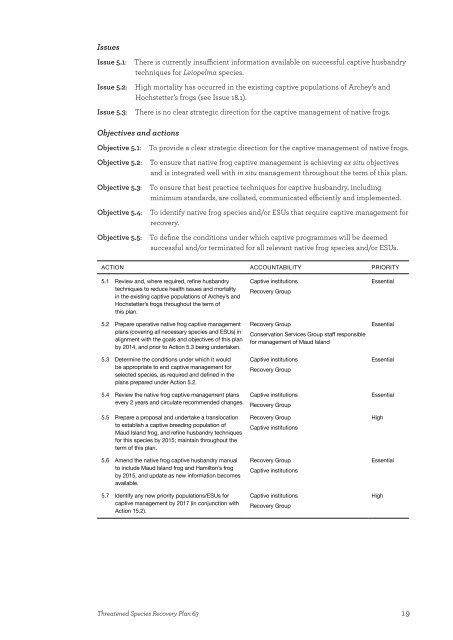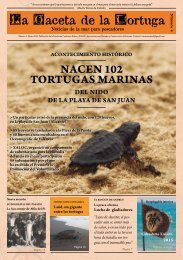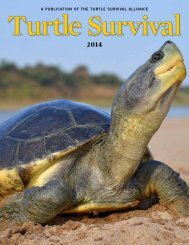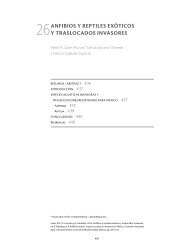tsrp63entire
tsrp63entire
tsrp63entire
You also want an ePaper? Increase the reach of your titles
YUMPU automatically turns print PDFs into web optimized ePapers that Google loves.
Issues<br />
Issue 5.1:<br />
Issue 5.2:<br />
Issue 5.3:<br />
There is currently insufficient information available on successful captive husbandry<br />
techniques for Leiopelma species.<br />
High mortality has occurred in the existing captive populations of Archey’s and<br />
Hochstetter’s frogs (see Issue 18.1).<br />
There is no clear strategic direction for the captive management of native frogs.<br />
Objectives and actions<br />
Objective 5.1:<br />
Objective 5.2:<br />
Objective 5.3:<br />
Objective 5.4:<br />
Objective 5.5:<br />
To provide a clear strategic direction for the captive management of native frogs.<br />
To ensure that native frog captive management is achieving ex situ objectives<br />
and is integrated well with in situ management throughout the term of this plan.<br />
To ensure that best practice techniques for captive husbandry, including<br />
minimum standards, are collated, communicated efficiently and implemented.<br />
To identify native frog species and/or ESUs that require captive management for<br />
recovery.<br />
To define the conditions under which captive programmes will be deemed<br />
successful and/or terminated for all relevant native frog species and/or ESUs.<br />
Action Accountability Priority<br />
5.1 Review and, where required, refine husbandry<br />
techniques to reduce health issues and mortality<br />
in the existing captive populations of Archey’s and<br />
Hochstetter’s frogs throughout the term of<br />
this plan.<br />
5.2 Prepare operative native frog captive management<br />
plans (covering all necessary species and ESUs) in<br />
alignment with the goals and objectives of this plan<br />
by 2014, and prior to Action 5.3 being undertaken.<br />
5.3 Determine the conditions under which it would<br />
be appropriate to end captive management for<br />
selected species, as required and defined in the<br />
plans prepared under Action 5.2.<br />
5.4 Review the native frog captive management plans<br />
every 2 years and circulate recommended changes.<br />
5.5 Prepare a proposal and undertake a translocation<br />
to establish a captive breeding population of<br />
Maud Island frog, and refine husbandry techniques<br />
for this species by 2015; maintain throughout the<br />
term of this plan.<br />
5.6 Amend the native frog captive husbandry manual<br />
to include Maud Island frog and Hamilton’s frog<br />
by 2015, and update as new information becomes<br />
available.<br />
5.7 Identify any new priority populations/ESUs for<br />
captive management by 2017 (in conjunction with<br />
Action 15.2).<br />
Captive institutions<br />
Recovery Group<br />
Recovery Group<br />
Conservation Services Group staff responsible<br />
for management of Maud Island<br />
Captive institutions<br />
Recovery Group<br />
Captive institutions<br />
Recovery Group<br />
Recovery Group<br />
Captive institutions<br />
Recovery Group<br />
Captive institutions<br />
Captive institutions<br />
Recovery Group<br />
Essential<br />
Essential<br />
Essential<br />
Essential<br />
High<br />
Essential<br />
High<br />
Threatened Species Recovery Plan 63<br />
19





